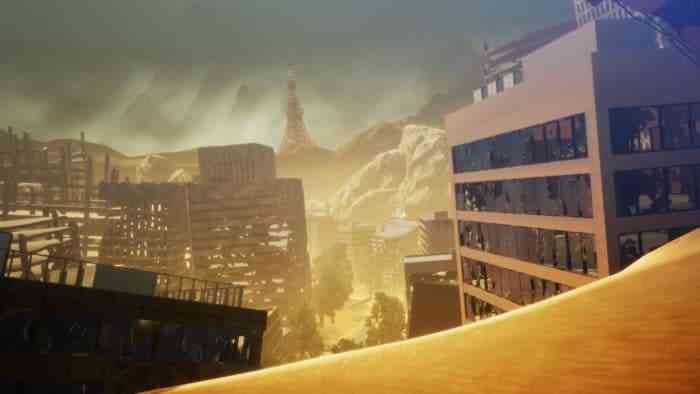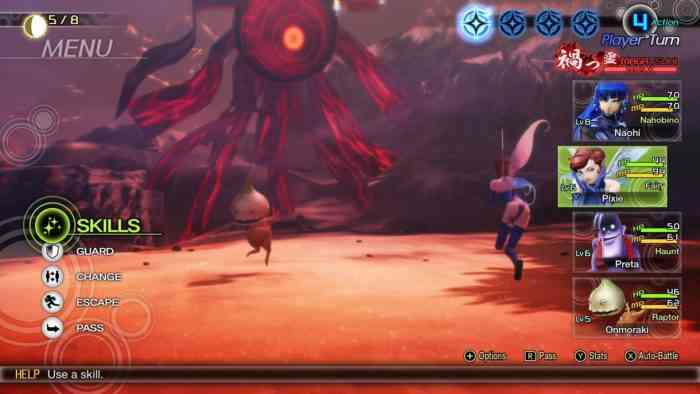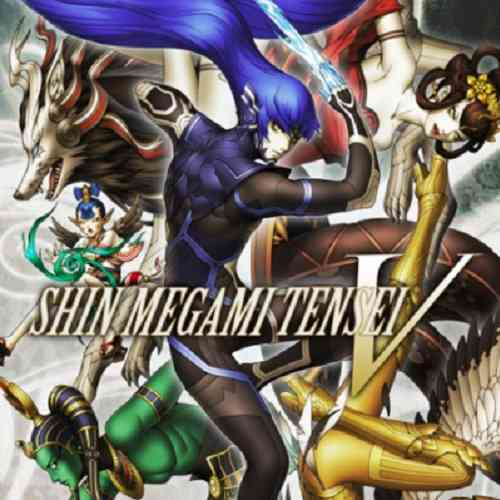Shin Megami Tensei V Review
Earlier this year, I stated that there was nothing quite like Shin Megami Tensei III: Nocturne. Now that Shin Megami Tensei V is here, I still stand by that statement, because despite some surface similarities, Shin Megami Tensei V is not trying to copy its predecessor. Re-capturing the disturbing world and oppressive atmosphere of Shin Megami Tensei III: Nocturne might be impossible, so Shin Megami Tensei V spins off in a different direction with less brutality and more uncertainty. Between the sci-fi aesthetic, the constant and faintly disquieting presence of Aogami, and an overall more somber look at a dying world, Shin Megami Tensei V has a lot to bring to the franchise’s creepy table. It also may have the best environmental design that Shin Megami Tensei has ever seen, period, which is saying something.
The Path to Godhood
In true series fashion, Shin Megami Tensei V begins with two contradictory events: an ominous voice discussing the end of the world and a bunch of Japanese teenagers talking, playing around with friends, and generally having fun as they make their way to school. Things take on a darker tone as the kids are warned to go home in pairs for their own safety. Then the protagonist and his group discover that their usual route back to the dorms is blocked off by a sudden and brutal murder—one that may not have been committed by a human. The protagonist, the school goofball, and an honor student all try to take the same alternate route, only for the ground to drop out from under them.

When you recover, you find yourself stranded in the apocalyptic city of Da’at, formerly known as Tokyo. One of your companions is missing. The other is kidnapped by a metal-faced angel before his eyes. You’re left alone to find your way through a sea of sand—sand, and hungry demons. Fortunately, you’re saved by the arrival of Aogami, a mysterious man with blue hair and strange power, who fuses with you. This transforms you into the Nahobino, a creature neither human nor demon, and gives you the strength to survive in this strange world. Unfortunately, you’re still stuck in the demon-infested ruins of your home, and for better or worse, you aren’t alone. To find out how Tokyo became a netherworld, you must battle countless demons, deal with the helpful but mysterious Sophia, and tear down the demon-infested Abscesses to claim their power for your own.
This is a pretty classic set-up in Shin Megami Tensei, with one major change: it appears that the world’s primary God is dead. Murdered. With the balance between order and chaos thrown into confusion, you must gather the fragments of God’s power and throw everything you have into your own cause. Identify that which is most important… and prepare to sacrifice everything else in its name. I wouldn’t call Shin Megami Tensei V as overtly a horror game as Shin Megami Tensei III: Nocturne, but this game also never lets you forget that you’re not playing as a human. The Nahobino may be a fallen god rather than a fiend, but this game challenges the assumption that there is any real difference between gods and monsters.

Everything Old is New Again
The shift to Unreal Engine 4 paid off big-time. This game is bigger—and more beautiful—than any Shin Megami Tensei game before it. In fact, this title as a whole feels much more sci-fi than the cosmic horror tone of previous titles, which isn’t a bad thing. There’s something truly creepy about roaming the streets of a ruined city, scavenging for items in glowing vending machines while the haunting cries of demons echo over the landscape. That the battles still recognizably take place in the same area you encountered a demon is a neat touch. The music is as enchanting and unsettling as ever, the graphics are fantastic, and the character designs bleed style. That said, the design of the Nahobino—and Aogami, for that matter–does kinda remind me of a sparkly Power Ranger suit, which gives him a very different kind of otherworldly air to the Demifiend.
The environment has clearly taken nods from Breath of the Wild, resulting in what feels almost like an open-world exploration game. The Nahobino has a dash mechanic, a jump mechanic, and a climbing mechanic, all of which combine to make exploring the game world incredible. The downside is that it can be hard to tell which obstacles can be traversed and which can’t. One of my favorite aspects of Shin Megami Tensei III: Nocturne–the ability to encounter, talk, and run quests for non-hostile demons who assume you’re one of them–also makes a return in this title. I love it for enhancing the sense of alienation and discomfort experienced by the player. Besides, half the fun of a game about monsters is the monsters themselves.

Combat is standard series fare: turn-based, high emphasis on elemental weaknesses, gives you extra turns for hitting the enemy where it hurts and takes turns away if the enemy does the same to you. It’s easy to lose control of the flow of battle if you let your guard down. Once you’ve slipped up, you can go from full health to dead in a single turn, so watch out. Don’t hold back, even against random encounters. Turn-based combat has never been so tense. Demon negotiation and recruitment are more important than ever. You can avoid conflict with a demon you already have in your party, but skipping battles isn’t always a good idea, especially when you constantly need to level grind to stay on top of things.
This time around, you teach the protagonist combat skills using consumable Essences and other, more esoteric skills known as Miracles using a currency called Glory. Essences will keep you playing longer. Miracles will shape the way the game is played. Demon Fusion is also back in action and offers more options than ever: Dyad Fusion, Reverse Fusion, Reverse Compendium Fusion, and Special Fusion. You’re gonna need to use all of them liberally before you even face the first major boss at Tokyo Tower. Also, this is one of the few games where status effects are actually effective, even against bosses.

Shin Megami Tensei V is an incredible achievement. While it comes off as less of a horror game than previous entries in the series, its sheer scale and eerie presentation more than make up for the lack of dedicated scares. In some ways, I feel that gaming technology has finally reached the point that it’s able to convey the tone and feel that Shin Megami Tensei has been trying to capture since the 80s. There’s a lot packed into this game, especially if you play on a higher difficulty, which I definitely recommend doing. If you’re allergic to grinding, there is an optional Safety difficulty that will let you focus on the story instead, but you’ll still probably spend a lot of time exploring the expansive game world and getting lost between buildings.
***Nintendo Switch code provided by the publisher***
The Good
- Eerie but inviting atmosphere
- Gorgeously desolate world
- Intense turn-based combat
- Beautiful graphics
- Narrative challenges assumptions
The Bad
- Not as scary as previous games
- Easy to get lost
- Lots of grinding
- Some English voices are questionable

